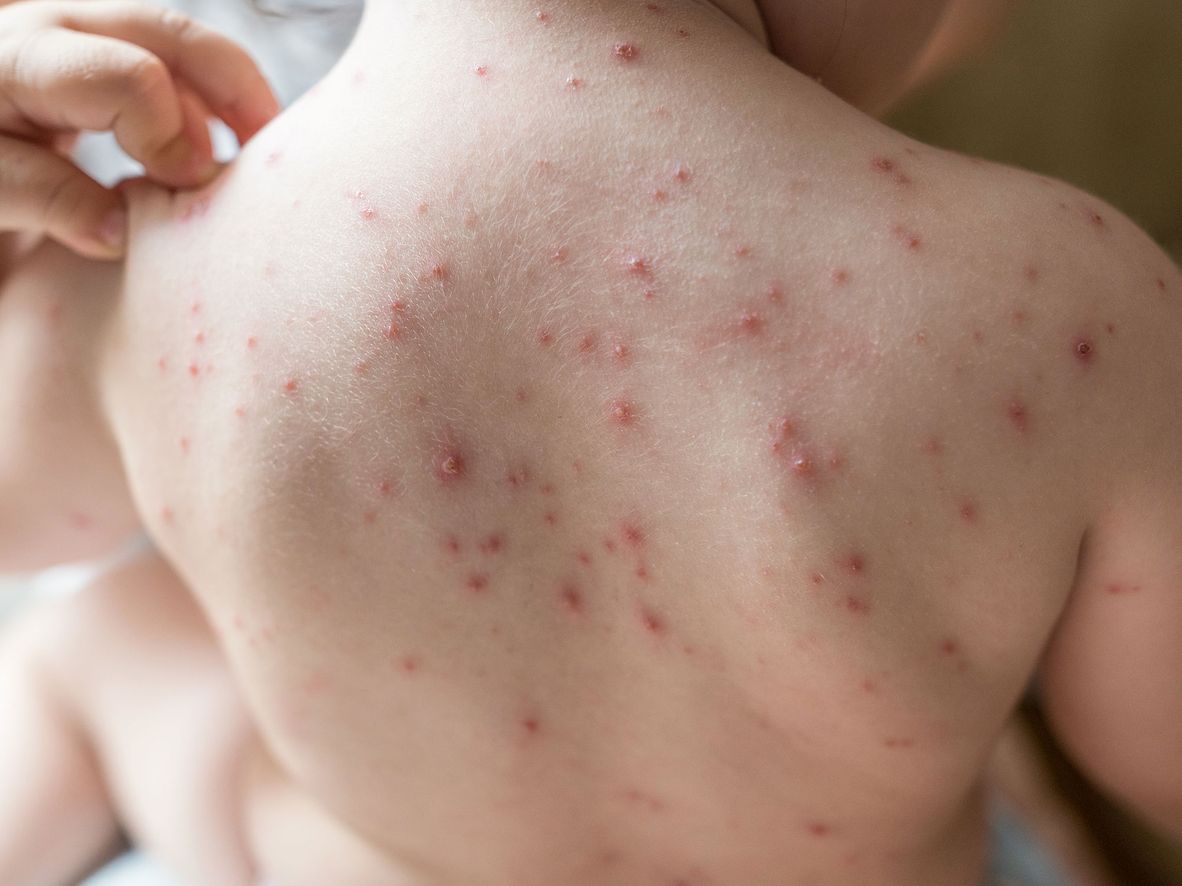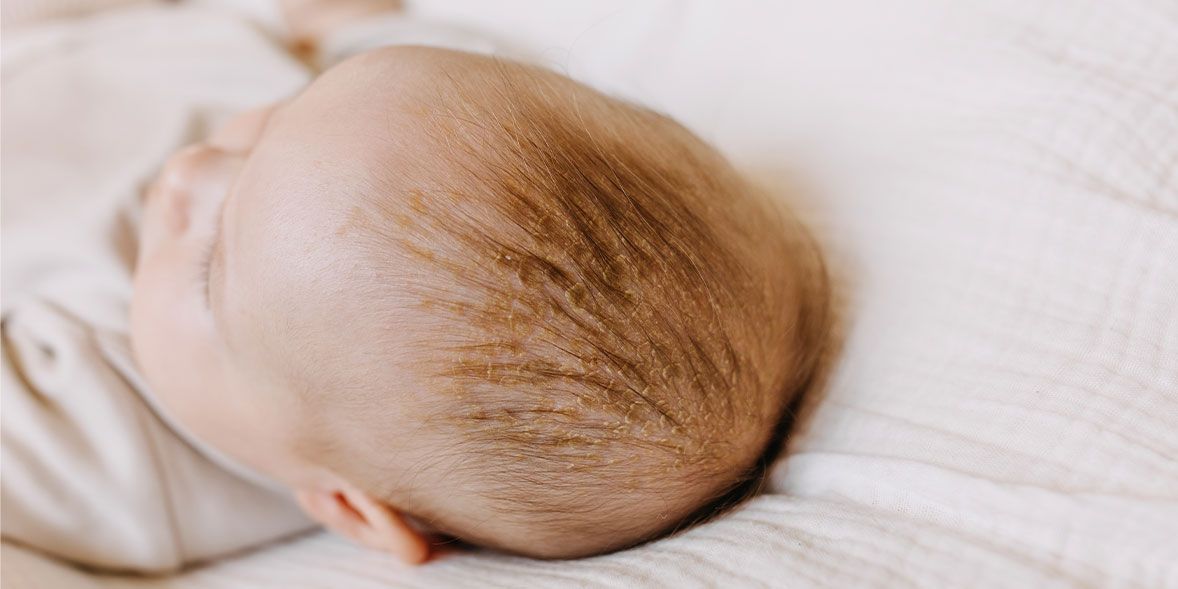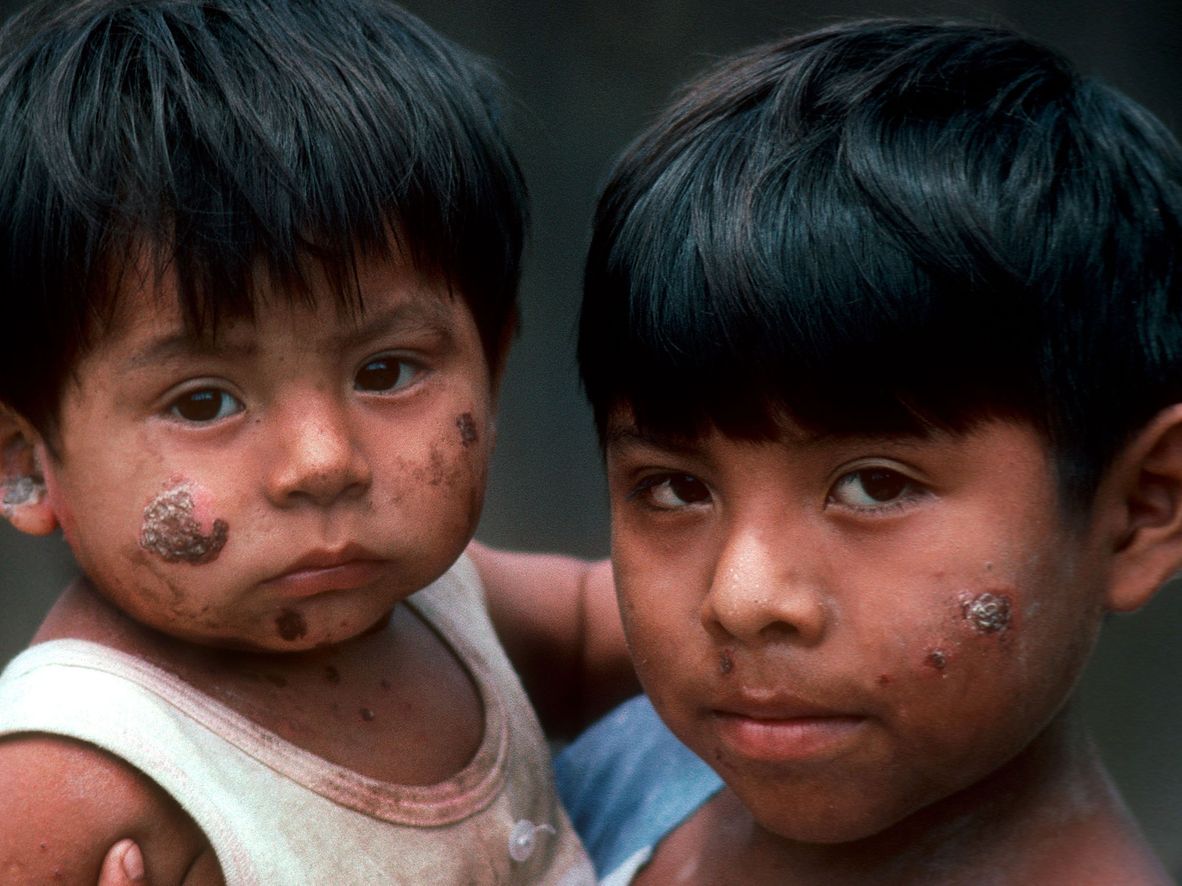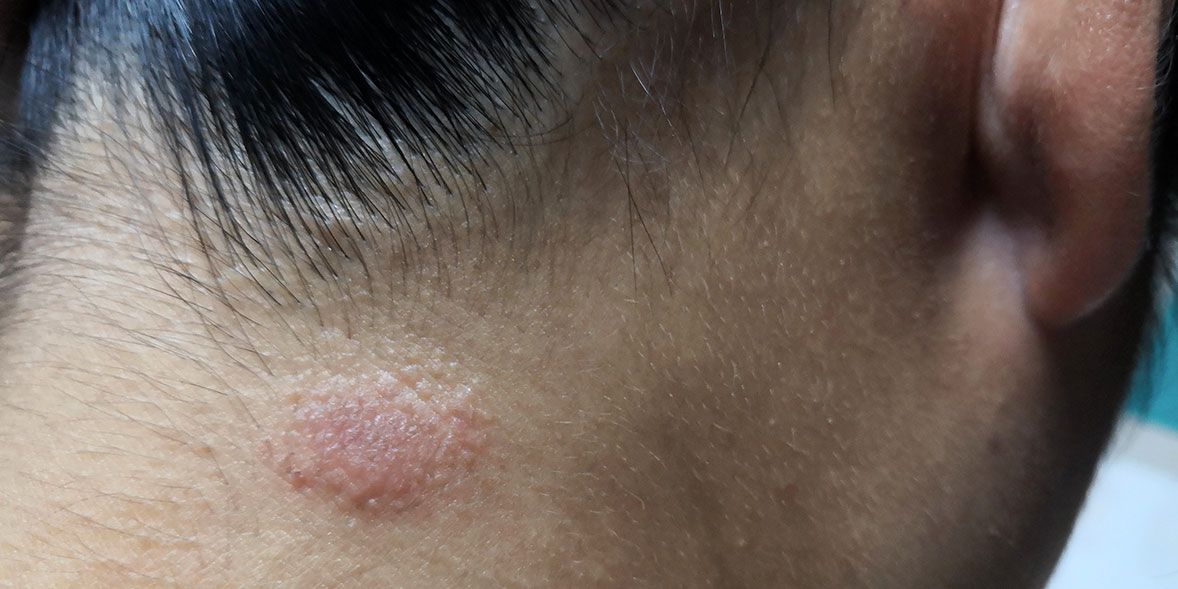
When you click on a retailer link, we may earn affiliate commission, which helps fund our not-for-profit mission. This tracks your activity using third party cookies. By clicking a link you are consenting to this.
What childhood rash is this?

Finding a rash or skin condition on your baby or child can be really worrying if you’re not sure what it is. Many are harmless but some can be serious, so it’s important to know what to do if you spot one.
Many rashes are accompanied by other symptoms such as fever, so it’s also worth checking if your little one has a temperature.
If you’re unsure about what constitutes a high temperature in your child, read how to take a baby or child’s temperature or head straight to our shortlist of the best digital thermometers.
Ways to keep your family living costs down, and kids of all ages happy Get our Family newsletter – it's free monthly
Video: what rash is this?
If you’re ever worried about a rash, the safest thing is to visit your GP or practice nurse for advice on what might be causing it. If you’re pregnant and have come into contact with anyone with a virus, you should also speak to your doctor.
The NHS says rashes can be harder to see on brown or black skin and advises: 'Check the soles of the feet, palms, lips, tongue and inside the eyelids for colour changes.'
Chickenpox
Chickenpox is a common and very infectious virus that usually gets better by itself after a couple of weeks.
Chickenpox symptoms
- Stage 1: Small red spots appear. These can be anywhere on the body. Your child may also develop a fever, get aches and pains and lose their appetite.
- Stage 2: The spots become itchy, fluid-filled blisters.
- Stage 3: The blisters scab and may become flaky or leak fluid.
Chickenpox treatment
- Keep your child rested and well hydrated.
- As it's a virus, chickenpox can't be cured with antibiotics, but over-the-counter gels and foams for treating chickenpox scabs are easy to apply, less messy than calamine lotion and won't dry spots out.
- Give your child baby paracetamol such as Calpol and antihistamines to ease itching (in children over 12 months) but avoid ibuprofen as it can cause skin reactions in people with chickenpox.
Cradle cap
If a baby gets seborrheic dermatitis, or 'cradle cap', it can result in what looks like a bad case of dandruff. It's a harmless condition that isn't itchy, painful or contagious and generally gets better by itself.
Cradle cap rash symptoms
- Large patches of white or yellow scaly skin on the scalp, or the scalp can look pink with white or grey scales on black or brown skin.
- It's mainly on the head and face but it can also appear in the nappy area.
Cradle cap rash treatment
- It usually clears up on its own within 6-12 months. In the meantime you can lightly massage a moisturiser onto the scalp to help loosen the scales.
- You can also gently brush the scalp with a soft brush then wash with baby shampoo. Don't be tempted to pick the crusts as this can increase infection risk.
Eczema
Eczema (atopic dermatitis) is a common skin condition that causes itchy patches of skin.
It can be worsened or even triggered by products such as soaps and shampoos or by factors such as central heating and hard water.
Eczema symptoms
- Itchy patches of skin that can appear anywhere but mostly on the hands, elbows, backs of the knee, face and scalp.
- It feels bumpy with small raised spots and the skin may look slightly darker rather than red.
- Infected eczema oozes or weeps, has a scabbed yellow crust, is more itchy and painful than usual and the skin may be red or swollen.
Eczema treatment
- Emollients. These can be used every day to stop the skin becoming dry.
- Steroids. Topical steroids can be used intermittently to reduce skin redness and dampen inflammation during an eczema flare-up. If these aren't working, especially in delicate areas such as around the eyes, calcineurin inhibitors may be prescribed.
- Wet wraps. These can help to cool the skin.
- Antihistamines. These can help relieve the itchiness caused by eczema.
- Antibiotics. If you suspect your child's eczema is infected, contact your GP or other health professional. It might need swabbing and a course of antibiotics.
Hand, foot and mouth disease
Hand, foot and mouth disease – which is caused by a virus – is actually a pretty common childhood illness (and has nothing to do with the foot and mouth disease that affects farm animals).
Hand, foot and mouth disease symptoms
- Sore throat, followed by mouth ulcers after a few days.
- High temperature and lack of appetite.
- Raised pink or red spots on the hands, feet and mouth, but sometimes on the thighs and bottom too. These become blisters, which are grey or lighter than the surrounding skin.
Hand, foot and mouth disease treatment
- You can't take antibiotics or medicines to cure hand, foot and mouth disease because it's caused by a virus, but the condition should get better by itself in 7-10 days (speak to your GP if it goes on for longer).
- Rest, drink plenty of fluids and eat soft foods like yoghurt but avoid acidic drinks such as orange juice and spicy foods as these can worsen mouth sores.
Heat rash (prickly heat)
Heat rash, or prickly heat, is a largely harmless but uncomfortable condition that happens when sweat glands become blocked. Babies may get heat rash because they can't control their temperature as well as adults and children.
Heat rash symptoms
- Small raised red spots
- An itchy, prickly feeling
- Redness and mild swelling
Heat rash treatment
- Keep your baby or child's skin cool by applying a damp cloth and dressing them in loose cotton clothing.
- Make sure your baby or child stays well hydrated, and give them cool baths or showers to cool them.
Hives (urticaria)
A hives rash – also known as urticaria or nettle rash – is usually caused by a reaction to food, medicines, pollen or insect bites and stings.
Hives (urticaria) symptoms
- Red, raised, itchy bumps or 'wheals', which can be in large patches or appear as red spots.
- Hives can be different shapes and sizes and can appear anywhere on the body.
- The rash is generally itchy but can also feel like it's burning or stinging.
Hives (urticaria) treatment
- Hives can be treated with damp compresses and cooling baths.
- You can also talk to a pharmacist or GP about antihistamines that are suitable for children.
Impetigo
Impetigo is an infectious bacterial skin condition, and while anyone can get it, it’s particularly common in babies and young children.
Impetigo symptoms
- Red, fluid-filled blisters that, when burst, form a yellow-ish scab that is sometimes likened to a cornflake.
- Your child may also have a temperature and swollen glands in their face or neck.
Impetigo treatment
- Impetigo can be treated with an antibiotic cream prescribed by the doctor and should get better in 7-10 days.
- Gently wash the scabs, dress your child in loose cotton clothes and trim their fingernails to reduce the risk of them picking the scabs off.
Measles
Measles is a highly infectious virus. It’s less common than it used to be because lots of children are vaccinated against it when they have the MMR (measles, mumps and rubella) jabs. However, cases usually occur in children who haven't been jabbed and there has been a recent increase in cases in the past few years.
Measles symptoms appear around 10 days after you’re infected, so it’s important to alert people your child may have been in contact with, including nursery and school.
Measles symptoms
- Cold-like symptoms come first, including a high temperature, runny or blocked nose and sneezing.
- Grey-white spots on back of the lips and inside of the cheeks and sore, red eyes.
- A red, blotchy measles rash appears a few days later. The rash doesn't tend to be itchy.
Measles treatment
- If you’re worried your child has measles, contact your GP.
- While there’s no treatment for the measles virus, the doctor can make arrangements to reduce the risk of the infection spreading
Meningococcal septicaemia
Meningococcal septicaemia is a very serious illness that can cause skin and tissue damage, bone growth problems, organ failure and limb loss if not treated quickly.
It’s caused by meningococcal bacteria in the blood releasing endotoxins (poisons) that cause widespread damage to the body, including to blood vessels in the organs, tissues and skin.
Meningococcal septicaemia rash symptoms
- The 'petechial' rash associated with septicaemia is caused by blood leaking into the tissues under the skin and it’s very distinctive. It looks reddish-purple (almost like a bruise) and won’t disappear if you roll a glass over it.
- Your child may already have other symptoms such as fever, vomiting, cold hands and feet, rapid breathing, aversion to bright lights, a stiff neck, becoming floppy or unresponsive and an unusual cry or moaning.
- Don’t wait for a rash – if you’re worried about any of these other symptoms dial NHS 111 (or 0845 4647 in Wales) or go to your doctor. If you can’t speak to a doctor, go straight to A&E.
Meningococcal septicaemia rash treatment
- Hospital tests will confirm whether the meningitis is viral or bacterial – as bacterial meningitis can be very serious, antibiotic treatment will usually be started immediately then stopped if tests show it's viral.
Nappy rash
Nappy rash is very common and is caused by moisture from urine and faeces irritating your baby's delicate skin, particularly the ammonia found in their urine. It can be uncomfortable for your baby, although mild nappy rash may not bother them too much.
Nappy rash symptoms
- Red, inflamed or spotty skin around your baby’s bottom and genitals.
- The skin may look shiny and sore and feel hot to touch.
Nappy rash treatment
- There are plenty of over-the-counter nappy creams to help ease sore skin and act as a barrier to moisture to prevent it happening.
- Change wet or dirty nappies as soon as possible and give your baby some ‘nappy-free’ time each day to allow air to get to the skin, placing them on a waterproof mat in case any accidents occur.
Ringworm
Despite the name, ringworm has nothing to do with worms: it's actually caused by a fungal infection.
Ringworm symptoms
- A ringworm rash can appear in a circular pattern (hence the ‘ring’ part of the name).
- It is red or silvery in appearance and may also be scaly, dry, itchy or swollen.
- Ringworm can appear anywhere on the body, including the groin (where it's known as jock itch) or the scalp (tinea capitis).
Ringworm treatment
- A pharmacist can give you an over-the-counter anti-fungal cream or shampoo.
- The pharmacist can also recommend if you should see a GP.
Roseola
Not to be confused with rubeola (which is what causes measles), roseola is a viral infection that causes a rash. It’s most common in babies, toddlers, and young children, although adults can also catch it.
Roseola symptoms
- Your child may develop a fever, sore throat, runny nose, diarrhoea, swollen glands and eyelids and lose their appetite.
- A roseola rash consists of pinkish-red spots, bumps or patches, starting on back and torso and spreading to the face, neck and arms.
- Some children may also have fits, known as febrile seizures, which are brought on by their high temperature.
Roseola treatment
- Treatment for roseola is plenty of rest and rehydration.
- If the fever is making your child uncomfortable, you can give infant paracetamol.
- Contact your doctor if your child has a febrile seizure.
Scabies
Scabies is caused by tiny parasitic mites (less than half a millimetre long) that burrow into the skin to lay eggs, causing a bumpy, itchy, blister-like rash. It can affect anyone, including children and babies.
Scabies symptoms
- Intense itching, especially during the night.
- A bumpy, itchy, blister-like rash. As the mites lay eggs, they leave lines with a dot at one end.
- The rash can take up to eight weeks to appear.
Scabies treatment
- Take your child to the doctor if you’re worried they have scabies, as it can be treated with a cream.
- It’s very infectious, so the whole family needs to be treated.
- You should wash all bedding at 50°C to remove traces of mites and put clothing that can't be washed into a bag and seal it for three days until the mites die.
Scarlet fever
Scarlet fever – also known as scarlatina – is a bacterial infection that mostly affects children. Although in the past scarlet fever was a serious illness, thanks to the advent of antibiotics it's now less common and easier to treat.
Scarlet fever rash symptoms
- A bright-red rash that feels rough to the touch – like sandpaper.
- You may also get a temperature, swollen glands, and a tongue that initially appears white, and then takes on a swollen ‘strawberry-like’ appearance.
Scarlet fever rash treatment
- You should always alert your doctor if you’re worried your child might have scarlet fever.
- Scarlet fever lasts for around a week and you can spread it up to six days before you get symptoms.
- You’re infectious for up to seven days before symptoms appear until 24 hours after the first antibiotic tablets are taken. Those who don't take antibiotics can be infectious for longer – for as long as two to three weeks after symptoms start.
Slapped cheek syndrome (Fifth disease)
Slapped cheek syndrome gets its name from the bright-red rash that appears on the cheeks of those affected, often looking like the person has been slapped. It’s caused by a virus called parvovirus B19.
If you're pregnant and come into contact with anyone with slapped cheek syndrome, visit your GP or midwife immediately. The virus can be very dangerous for unborn babies.
Slapped cheek syndrome rash symptoms
- Red cheeks aren’t usually the first sign of the illness – your child may have a high temperature, runny nose, sore throat and headache.
- The cheek rash will appear a couple of days after this, and your child may then develop a raised, itchy, spotty rash across their body.
- Cheek redness and the body rash usually fades within two weeks.
Slapped cheek syndrome rash treatment
- As it’s a virus, there’s no medication for it, so the key treatment is rest, fluids and infant paracetamol if your child seems uncomfortable or in pain.
Meningococcal septicaemia rash on the eye conjunctivae photograph by David Warrell. Photograph of meningococcal septicaemia rash on dark skin, courtesy of the Meningitis Research Foundation.



































































